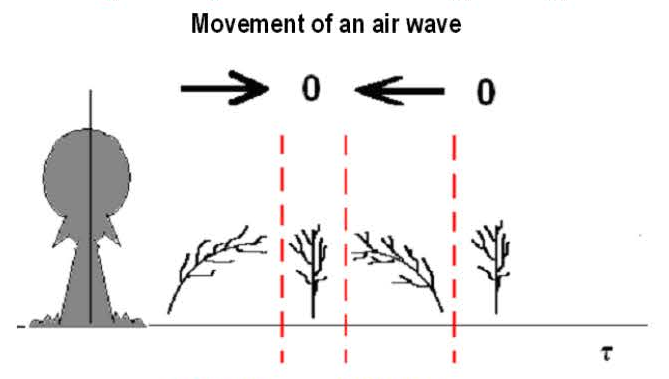Let’s consider all the chain of events.
At first it is necessary to lead the analysis of the events prior the occurrence of «the black hole». We shall define which event leads to the occurrence of «a black hole»?
The occurrence of «a neutron star» and «a black hole» is resulted by the «collapse» of stars. The explosion capacity at the moment of «a black hole’s» birth is more powerful than the explosion capacity at moment of «a neutron star’s» birth.
In the previous sections, we have found out that the «collapse» of stars is a nuclear explosion resulted by an uncontrollable chain reaction of transuranic elements neutrons division, and possibly, by reactions of self-disintegration of kernels of super heavy elements, whose existence is possible only in stars conditions.
The physical phenomenon of «the gravitational collapse» as explosion resulted by the compression of matter under the action of gravitational force of the Star, does not exist (there are not present proofs of this phenomenon).
So, we have come to the conclusion, that the physical phenomenon (or a circuit of physical events) named «the black hole», appears as a result of nuclear explosion of huge capacity, at the moment of «collapse» of «the white dwarf» of stars with great weights.
What occurs to the matter in the explosion epicenter and around it?
Let’s consider the physical phenomenon of the explosion and the chain of possible events after it.
In the explosion epicenter, in a point A, there is weight Мо, figure №R-7.1.

(121) Figure №R-7.1
Point A — the weight center during the initial moment of time τ = 0, andМо.
At moment of explosion τ > 0, the substance weight placed in an epicenter under the action of explosion energy scatters in all the directions, with different speeds.
Point A as before and after the explosion is the center of weight. The sum of all scattered splinters will equal Мо.
That means ΣMi =M0
According to the law of energy conservation and the third law of Newton, the impulse of weight Мо before the explosion will be equal to the sum of impulses after the explosion.
M0 . V0 = Σ(Mi . Vi) where V0=0, and Vi> 0
Weight Мо, from the explosion’s epicenter, where there is a point A, has been completely thrown out.
What remains after the explosion in its epicenter???
The answer is elementary simple: Nothing! In case when the explosion has occurred in the gas environment, after the explosion vacuum is being formed in the epicenter. Vacuum, regarding the gas pressure of the surrounding space. In space — the vacuum, regarding the gas pressure in space.
We shall continue to form the chain of events occurring in the epicenter after the explosion.
The weight thrown out from the epicenter, in the process of movement, creates a shock wave extending to all of the directions and in the expansion process losing their energy and density. After the loss of energy and the disappearance of the shock wave, the vacuum placed around the epicenter of the explosion, soaks up gas and dust into its volume and creates a shock wave moving in the opposite direction, to the point A – to the epicenter of the last explosion.
Let’s simulate a chain of processes occurring in the environment at the moment of the explosion, and after it.
These processes can be simulated evidently in the simplified kind of an aquarium, by a fast immersing of cargo into the water (figure №R-7.2). In figure №R-7.2 represented the frames from an educational film about hydrodynamics.

(122) Figure №R-7.2
Whole watching the film on slow motion it is visible that the cargo, being quickly plunging into the water, supersedes the volume of the water on its way of movement, emitting replacement of substance at the moment of explosion.
During the downfall of the cargo, the first shock wave is formed in the water by the superseded water (figure №R-7.2), (a photo 1, 2). The force of this wave depends on the volume, the form and the fall speed of the cargo. After the passage of the cargo, there is a free space which is filled with the surrounding water. During the filling of this free space, a second water shock wave is created, directed to an opposite side concerning the first wave, figure №R-7.2 (a photo 3, 4, 5, 6, 7, 8). This wave goes from different directions and weights of water, and all of these waves meet in one place, figure №R-7.2 (a photo 7, 8), strengthening and concentrating power action of these shock waves. At the collision of these shock waves in the epicenter of the simulated explosion, figure №R-7.2 (a photo 9), the weight of water increases, and the reflected energy forms the third shock wave, moving in the direction of the first, fig. № R-7.2 (a photo 10,11). In fig. №R-7.2 (photo 9, 10, 11, 12) represented the beginning and the development of dynamic processes in the epicenter and around it after the explosion. Similar process has a fading character. The more powerful the first wave is, the more waves it will be formed.
Similar dynamic processes occur at the moment of explosions. Probably, a similar dynamic processes in «the black hole» lead to the beginning of thermonuclear synthesis. The given physical phenomenon is observed in the nuclear weapon tests (uranium and hydrogen bombs).
Let’s consider the dynamic processes occurring during the tests of the nuclear weapon.
(123) Figure №R-7.3
They are described in books and shown in documentary films about tests on nuclear weapon. After the nuclear explosion, the shock wave goes from the explosion’s epicenter to all the directions, and after that, it comes back to an epicenter, figure №R-7.3.
In the documentary films about nuclear weapon tests, it is visible as the air shock wave moves to one direction, and after that, the same shock wave comes back, moving to the opposite side.


